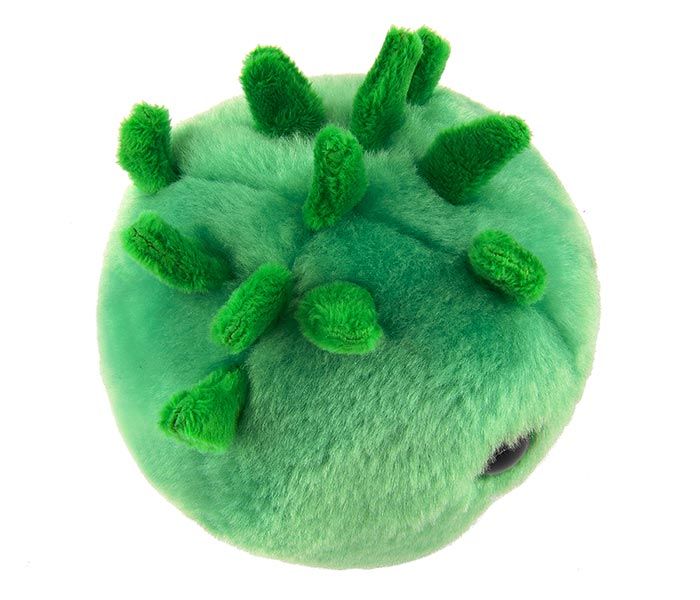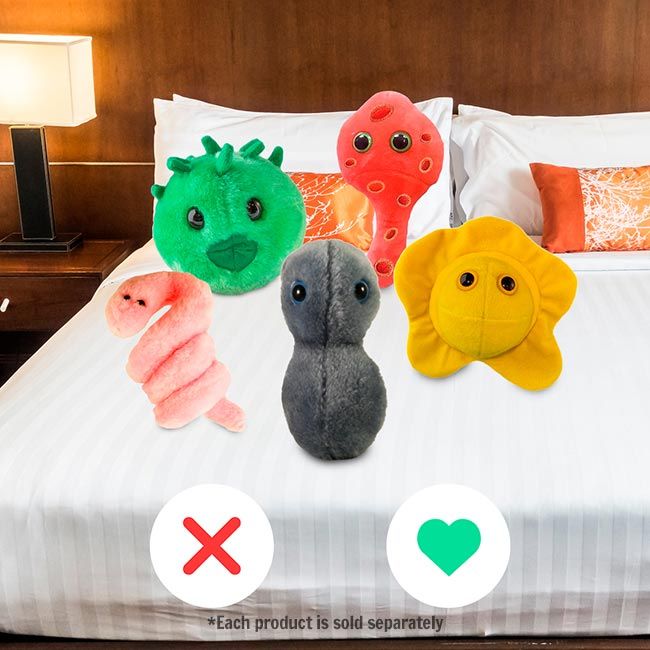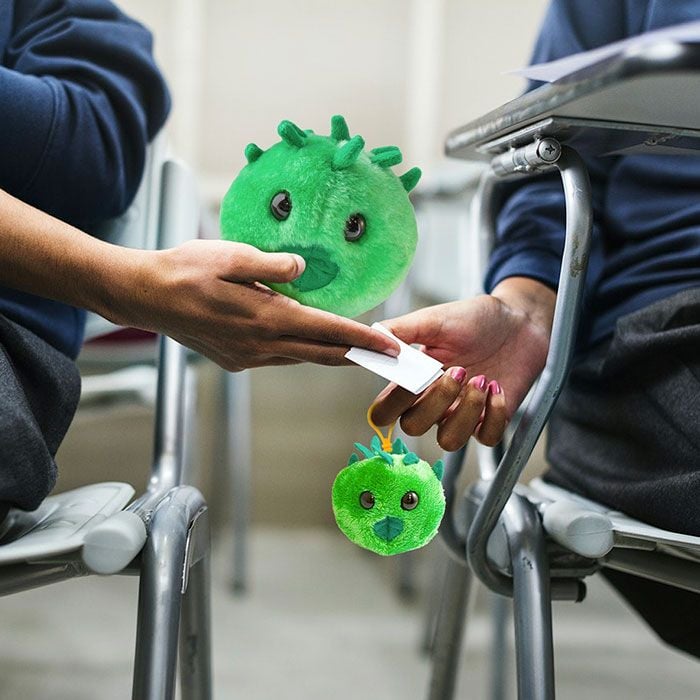Chlamydia (Chlamydia trachomatis)
Spread awareness and learn the facts about Chlamydia and Sexually Transmitted Infections. GIANTmicrobes Chlamydia helps start important discussions about reproductive health and serves as a reminder to act smart and be safe.
A unique, memorable and fun gift for friends and loved ones and anyone with a healthy sense of humor! Makes a great educational tool for students, educators, nurses, doctors, public health experts, scientists and reproductive health professionals. Soft, cuddly and memorable, includes an educational card with facts about this microbe.
Size: 13 x 13 x 10cm
Product Details
Additional Information
| Sizes | Giantmicrobes are based on actual microbes, cells, organisms and other critters, only 1,000,000 times actual size! Gigantic (GG) 40-60cm XL (XL) 25-38cm Original (PD) 12-20cm Minis (MM) 5-10cm each Keychain (KC) 5-10cm with clip |
|---|---|
| Materials | Plush from all new materials. Stuffed with polyester fiber fill. Surface washable: sponge with water & soap, air dry. |
| Packaging | Each plush microbe includes a printed card with fun, educational and fascinating facts about the actual microbe or cell. |
| Safety | Every product meets or exceeds U.S. and European standards for safety. For ages 3 and up. |
All about Chlamydia (Chlamydia trachomatis)
FACTS: Chlamydia is perhaps the most common of all sexually transmitted diseases, though it is comparatively unsung. While it can produce symptoms such as discharges, burning sensations, abnormal bleeding, pain, and nausea, these symptoms are easily confused with those caused by gonorrhea. In addition, in nearly three quarters of women and nearly half of men chlamydia produces no symptoms at all.
Untreated, the infection quietly spreads until it can attack fallopian tubes and ovaries, causing permanent damage to the female reproduction system, and in some cases even infertility. (It can also lead to epididymitis in men, which can cause sterility.) Fortunately, affordable and reliable testing is available for chlamydia – and it is highly responsive to antibiotics. Unfortunately, treatment is often tragically delayed until it is too late.
In addition to its venereal impact, Chlamydia trachomatis is also responsible for trachoma, the leading cause of preventable blindness worldwide. Repeat infections with the bacteria eventually cause the eyelids to invert, and untreated scarring ultimately destroys the vision.
Trachoma is primarily confined to the developing world where medical care is limited. However, because C. trachomatis bacteria can be transmitted from a mother to a child during birth, half of the children born to mothers with chlamydia enter the world with an eye infection – or worse: chlamydia has also been implicated in causing infant pneumonia, as well as premature- and still-births.
| Name | Its name comes from the Greek words “khlamydos”, meaning cloak, and “trakhoma”, meaning rough. These words together describe the rough scarring caused by this infection. |
|---|
| Actual Size | These microbes range from 0.2 to 1 micrometer. That’s 250 thousand times smaller than a golf ball! |
|---|
| Where It Lives | Chlamydia is a common sexually transmitted disease seen in the U.S. that can infect eyes and genitals. It’s caused by a bacteria called Chlamydia trachomatis and is passed from person-to-person during unprotected sex. |
|---|
| Symptoms | People with chlamydia usually experience a painful, burning sensation while urinating. It also causes swelling, bleeding, and unusual discharge from the genital area. If left untreated, it can cause future pregnancy complications in women. C. trachomatis can also infect the eyes, causing swelling and scarring that can lead to blindness. |
|---|
| Cure | Antibiotic treatment with doxycycline or azithromycin |
|---|
| History |
Although the disease had been well-known for centuries, the bacterial agent was only first discovered by Austrian scientist Stanislaus von Prowazek and German scientist Ludwig Halberstadter in 1907. Big Outbreaks: Chlamydia has been a prevalent global disease since ancient Egyptian times, as early as 15 BC! Recent Outbreaks: 2015: An outbreak was reported at a Texas High School where at least 20 high school students were infected. |
|---|
| Fascinating Facts |
Chlamydia infection can often be mistaken for gonorrhea because the symptoms are so similar. That’s why hospitals usually test for both at the same time. Famous people who died of it: Fortunately Chlamydia isn’t a disease people usually die from, but you can catch it more than once. According to his doctors, President John F. Kennedy was regularly treated for chlamydia throughout his life! |
|---|


















